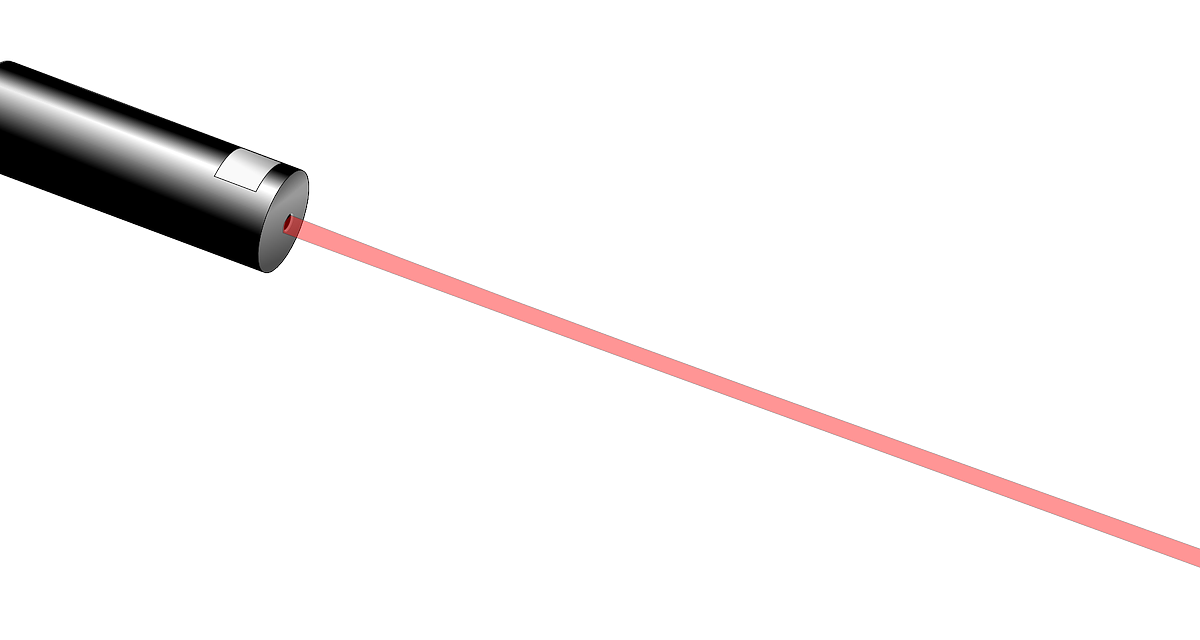Table of Contents
What does a Laser Pointer Mean?
Laser pointer is a small, handheld pen-like device that uses a power source (usually batteries) and a diode laser to crop a coherent beam of monochromatic light. Laser pointers are primarily used to highlight landmarks with a brightly coloured light beam. Typical inexpensive laser pointers that come with key chains are nothing more than high-power LEDs for security.
Webtech On Explains the Laser Pointer
Laser pointers consist of dual-frequency pumped IR, called diode-pumped solid-state lasers. These typically produce a red, green, blue, and violet beam with higher apparent power, typically up to 300 mW. However, laser pointers present some safety risks as they can be very dangerous if pointed at the skin or eyes, causing severe injury and should be used with great care. Therefore, laser pointers were introduced as a low-power tool for everyday use.
The most prevalent situations where laser pointers are utilized to highlight or accentuate critical points are in commercial or educational presentations. In astronomy, more powerful laser pointers are also employed to aim at celestial objects. Other uses for laser pointers include improving the precision of weapon aiming and levelling surfaces for use in construction.
Applications for laser pointers in industry, commerce, and everyday life include: Pointing instruments for presentations in business and education
for use in industrial leveling and distance measuring
Added features in laser shows
Like a beacon in emergency situations
Laser sights
Types of laser pointers
There are several types and varieties of laser pointers. I
Red laser pointers
Blue laser pointers
Green laser pointers
Keychain with a laser pointer.
Characteristics
Wavelength and colour
The colour of the dot or beam of a laser pointer directly corresponds to the wavelength it emits. While all lasers can emit visible, ultraviolet, and infrared light, laser pointers are typically limited to the visible spectrum due to the viewer’s inherent need to see their output.
The colours of a laser pointer often make a big difference in the simplicity or complexity of the device. For example, a red laser pointer might only consist of a 671 nm laser diode, batteries to power the diode, and a simple lens to collimate the output beam. (Note that this is possible because the laser diode’s output falls into the red spectrum.) Conversely, since laser diodes emitting light in the green spectrum are not usually available, green laser pointers must include more components.
Output Power
A laser’s output power refers to its beam’s strength and is measured in watts (W) or milliwatts (mW). Determining the power output of a laser pointer not only determines its relative brightness but also determines its safety class, as described below.
Safety
As powerful laser pointers have become widespread and accessible to consumers, manufacturers and industry groups have become more aware of the dangers of such devices. While most early laser pointers for classroom use were limited to 5mW or less, low-cost, high-power devices emitting up to 1000mW are now readily available. Even brief exposure to a 200 mW laser emitting at 100 yards can cause permanent eye damage.
Precautions for Using Laser Pointers
Laser pointers are widely used in many claims as they are helpful for PowerPoint presentations in the classroom and in meetings.
The beam or beam of light from a laser pointer should not be aimed directly at any object in exchange with the sun, as it may burn the thing.
They show the distances at which the laser beam causes eye damage and temporary blindness.
Laser pointers are limited to the eye as they cause retinal damage and blindness when the laser beam is directed directly into the eye.
Laser Pointer Use
Surgery, skin and laser operations, as well as cutting and welding materials, all make use of laser pointers. They are found in optical disc drives, laser printers, and barcode scanners. Utilized in fibre optic communications as well. Applications
Typically a portable laser pointer is used to point at a screen or graphics during a presentation, for example. Conference to direct the viewer’s attention to certain points. This is suitable because it can be done from a great distance and only requires a small portable device. However, the visibility of the generated dot on the screen is often poor (especially for red laser pointers with relatively long wavelengths), and a fast-moving light spot can be somewhat jittery. Therefore, some people prefer an old-fashioned optical sight for presentations.
Utilize to Align
Laser pointers might theoretically be used for alignment. However, specialized alignment lasers could be more suited for some uses. They can have a housing attached more efficiently, for instance, and the beam direction may be more steady.
Range of the Laser Pointer
The uninitiated often ask what a laser pointer’s range is, and in response to this interest, some manufacturers give more or less dubious numbers.
The range of a laser pointer can also be understood as the maximum distance from which a point on the screen can be seen. This type of range is usually limited not by beam divergence but by total optical power (apart from wavelength and ambient light level) since the problem is not the relatively small divergence from the laser pointer to the screen—.. but rather a massive variation of scattered light on the way back. Therefore, a person standing next to an illuminated screen will quickly see a dot when it is barely visible from the position of the laser designator.

